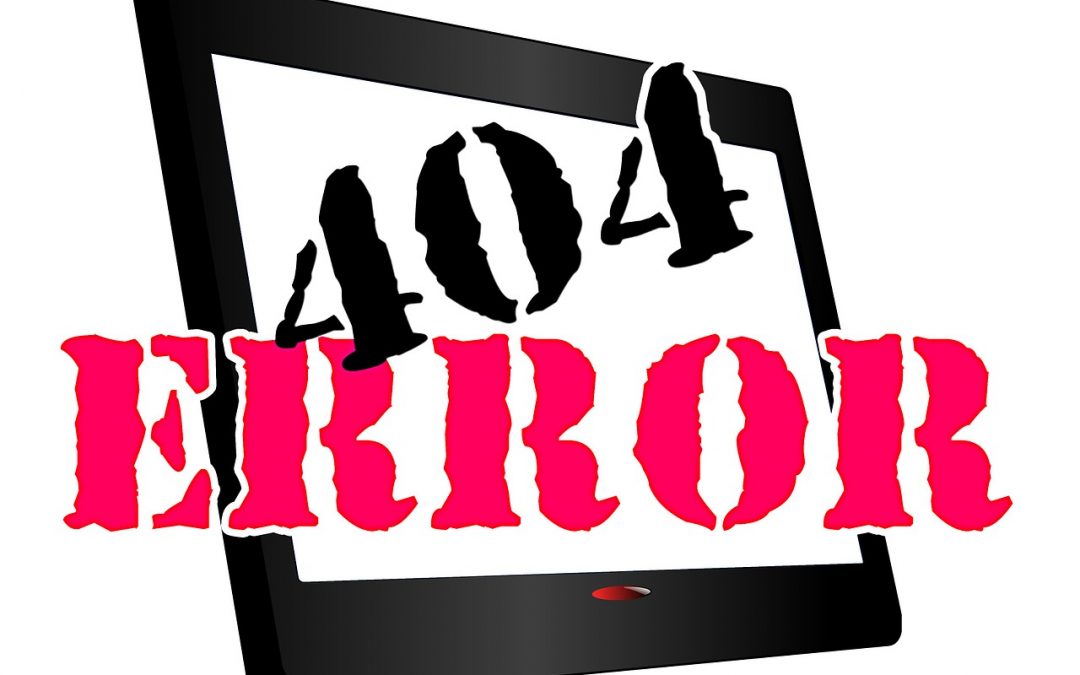
by Employment Screening Alliance | Sep 7, 2016 | Employment Screening
Employment Screening | 5 Ways to Guarantee You Won’t Fill Your Open Roles Pt. 2
Employment Screening | 3. Set your salary, equity, or benefits below market rate
“Location, location, location” isn’t just for real estate. Where you’re expecting people to work is just as important as what you’re expecting them to do when you’re determining compensation packages. A dead giveaway that your compensation is off-base is when you make plenty of offers but get turned down constantly.
If this is happening to you, consider asking yourself why it’s happening.
- Does our package make sense for our location? Hiring in Seattle looks very different from hiring in Chicago. The Bay Area, the peninsula, the East Bay, and San Francisco proper have very different compensation environments based on their desirability. Don’t just guess at this – figure out how far you are from local expectations. (by talking to colleagues or recruiters in your area).
- Who are our competitors? Not from an industry perspective, but who are we competing with for candidates? If you’re a startup directly competing with Google or Facebook, you’re going to struggle with losing people to compensation you just can’t match (so work on your selling skills!).
- Does our package feel “fair”? If you’re a startup looking for a principal engineer without offering any equity, that engineer is going to feel like the offer is unfair. If you’re offering a below-market package (which startups have to do sometimes!) to a senior-level CMO without any explanation, you should expect her to walk. It’s not that you have to shell out salary or equity all the time for top talent, but you need to put your offer in a context that will feel “fair” to the candidate.
4. Make the job description boring or confusing
Better yet … don’t provide potential candidates with a job description.
I’ve worked with far too many companies who struggle with hiring. That’s typically why they come to us!
One thing they’ve all had in common was that their job descriptions needed major revamping. I’ve even seen a team that was so desperate for good candidates that they created an internal competition to rewrite the job descriptions for the open roles.
If you discover that your current job description for a software engineer is just a mishmash of generic requirements, specific duties, and confusing jargon, then it will be no wonder that nobody is applying.
5. Don’t offer any career path
A good friend of mine recently shared the following story.
When people from other parts of her company would look at the open roles on her team, they’d ask current members of the team about career paths and promotions. You know what our answer was? Crickets chirping.
That’s right – they had never promoted anyone. There was absolutely no career path. Apparently there was simply working 80-100 hour weeks until you burned out. That’s all.
All the fun in the world won’t make up for having a company or a team that won’t help someone’s career. If that team wanted to pull people into it, all it had to do was to promote someone (and there were many someones deserving of promotion) or have a concrete promotion roadmap to show to candidates. But it never did.
Not having a career path hurt that team in other ways as well, because not only could it not hire, but it started bleeding its best talent. It turns out that having a career path both attracts and keeps top talent.
Learn what ESA can do for you! Call 866-830-3724 to discuss employment screening services or complete the form on www.esascreening.com now!

by Employment Screening Alliance | Sep 7, 2016 | Employment Screening
Employment Screening | 5 Ways to Guarantee You Won’t Fill Your Open Roles Pt. 1
Employment Screening | We have clients who tell us that in some parts of their businesses they literally have as many open roles as they have people. Each day they get further and further behind on their roadmap (despite everyone working a truly obscene number of hours). Their stakeholders and customers are cranky about it; and the existing staff feel like mice on spinning wheel.
Why can’t they hire?
If you’ve found yourself in a similar position, and you’re comfortable overworking your existing team, and letting your employer brand go down the drain (because trust me, word gets out), here are five ways to ensure your number of open roles goes through the roof. And you may just find yourself dealing with a few extra resignations as an added bonus!
1. Don’t make hiring your priority
Often the problem when it comes to hiring is that you don’t spend enough time on it.
There’s a cliché for sales people that says, “Always be closing”. Well there’s a similar one for business owners and hiring managers to “always be recruiting” – even if it means just keeping your eyes and ears open, and meeting with prospective talent for a coffee,
Let me guess … recruiters are sending you good candidates but you’re just sitting on them for a week or more? I can assure you that no recruiter – no matter whether they’re in-house, contingent, or hourly – wants to work with a hiring manager who does a great impersonation of a black hole.
If you’re not filling your roles, check with your hiring managers. Are they getting back to recruiters and candidates as quickly as possible? And, yes, I mean to prioritize hiring above everything else. After all, how are they going to hit their goals and targets if they don’t get the people through the door?
2. Don’t have a hiring process
“Hey guys – I just finished my phone interview with a great candidate. I love her! Uh… what do I do next?”
How often does this happen at your company? If it’s more than rarely, you probably have a process problem. And a process problem will cause you to lose candidates. Why? Because you won’t get back to them quickly (see #1). Or maybe because you can’t manage their expectations. Imagine if your star candidate heard three different versions of “next steps” from three different interviewers. Sounds rather confusing, which is usually enough to spook a candidate.
If there’s no streamlined recruitment process, the first thing a candidate is going to immediately assume is that there are no processes within the business and that it’s probably completely disorganised. While this might be far from the truth, that’s going to be the candidate’s perception which in their mind will be the reality of the situation.
Learn what ESA can do for you! Call 866-830-3724 to discuss employment screening services or complete the form on www.esascreening.com now!

by Employment Screening Alliance | Aug 31, 2016 | Employment Screening
Employment Screening | 5 Hiring Manager Interviewer Fails Pt. 2
Employment Screening | 4. Don’t dwell only on his or her resume
An interview is the chance to not only dig deeper and gather context for the achievements the candidate has provided, but an opportunity to get to know the candidate as a person.
So in addition to asking about what he or she has done in the past, have some probing questions ready that get the interviewee to think well beyond the “tell me about yourself” questions (that they probably already found a stock answer for).
Be familiar with their background before you sit down with them, so you don’t spend this valuable time poring over their resume as if you’re seeing it for the first time.
5. Maintain eye contact and shake hands like you mean it
This is another one that works both ways.
You may not feel comfortable with a job candidate who spends most of the interview staring at the ceiling as if all the answers were up there.
And if your eyes wander, the candidate will notice as well.
Always look the candidate in the eye when you welcome him or her into your office or conference room, and – without staring and probably scaring the candidate – return their gaze politely as they speak, and when they leave.
A firm but not knuckle-crushing or, conversely, dead fish handshake will likewise be appreciated and speak to your professionalism and interest.
According to the ever authoritative Wikipedia, “A tell in poker is a change in a player’s behavior or demeanor that is claimed by some to give clues to that player’s assessment of their hand.
A player gains an advantage if they observe and understand the meaning of another player’s tell, particularly if the tell is unconscious and reliable.”
For your hiring managers, they might not even be aware of their “tells” and it may be beneficial to realize that all those little things they do while conducting an interview may reveal to the candidate – for whom this hour may be the most important time in their career – just how engaged or how distant you are.
And that can say a lot to a very bright, social media-engaged candidate about you and your company. -Hireright
Learn what ESA can do for you! Call 866-830-3724 to discuss employment screening services or complete the form on www.esascreening.com now!

by Employment Screening Alliance | Aug 31, 2016 | Fingerprinting
Fingerprinting | A 3 Step Process to Improve Driver Recruitment Pt. 1
Fingerprinting | With today’s shortage of safe drivers the importance of recruiting and attracting drivers to apply with your company has become paramount.
It’s a noisy employment market and quality drivers hold the cards to choose who they drive for.
So, how do you stand out from the competition? Follow these three simple steps to improve your driver recruitment activities:
- Create a compelling value proposition
- Create an effective message that attracts drivers
- Constantly evaluate the effectiveness of advertising sources
Creating Your Value Proposition
Great businesses don’t sell products, they solve problems.
A value proposition is the concise statement of why your company is the best solution to a problem.
Take a look at your current driver advertisements – do they look just like your competitors’ ads?
Unfortunately, the market is flooded with advertisements touting platitudes such as “Great Pay!” or “Drive for the best!”
How is a driver supposed to know that your company is the best if every other carrier uses the same selling points?
To be successful, you must sell your company and your job. Start by creating a unique value proposition:
- Define your target driver
- Identify their pain points
- Research competing alternatives – direct and indirect competition
Define Your Target Driver
You have great drivers who have been with you for years and you wonder, “Why can’t there be more drivers like them?”
To understand the type of driver that you want for your company, start by putting together a profile of your top performing drivers.
Here are some questions to get you started:
- What do you like most about this job?
- What satisfaction does the job give you?
- Why do you show up on time every day?
- What does our company do well?
This exercise will help you in crafting your marketing message and to identify potential good fit drivers when they do apply.
Identify Pain Points
Drivers will only consider joining your company if you solve a problem they have at their current employer.
Your recruiters should start their process by asking diagnostic questions such as:
- What job would be a great fit for you?
- Why are you looking to leave your current job?
- How often do you want to get home?
- What benefits are important to you?
Think about what your company does well and ask questions around your strengths.
Make sure your recruiters diagnose the driver’s pain before they begin to prescribe your company’s job(s) as the cure. hireright
Learn what ESA can do for you! Call 866-830-3724 to discuss fingerprinting services or complete the form on www.esascreening.com now!

by Employment Screening Alliance | Aug 26, 2016 | Fingerprinting
Fingerprinting | Four Common Myths about Drug Testing
Fingerprinting | When it comes to employment drug testing, there are several common misunderstandings and misconceptions, both for companies and individuals. Here we will examine some of the most prevalent myths.
Illicit drug use doesn’t impact work safety
Studies show that drug use directly contributes to an unsafe work environment. Alcohol and drugs are responsible for one in six on-the-job fatalities. According to the National Safety Council, 80% of those injured in “serious” drug-related accidents at work are not the drug-abusing employee, but innocent co-workers and others. Employees who abuse alcohol or drugs are 3.5 times more likely to be involved in a workplace accident than other workers.
These stats have been borne out in real-world examples as well. One prominent study involved the Southern Pacific Railroad and compared its accident rates before and after implementing a drug testing program. The company realized a dramatic 71.2% decrease in accidents after it began its drug testing program.
Once you use marijuana, it stays “trapped” in your body for detection on drug screens for months or years
There’s been a great deal of misinformation floating around about how long marijuana stays in the system, with some guidance stating days and some claiming it can stay in the body for years.
Recent studies have shown that, depending on the cannabis concentration being used, it’s likely that a chronic user would produce a positive urine test for less than 7 days and only in very extraordinary circumstances for about 10-21 days after the last smoking episode and an occasional user would test positive within 3-7 days after the last usage.
There’s no way to beat a drug test
There are numerous suggestions and resources available online for ways to beat the test and subvert results. They generally fall into three categories:
- Diluting agents: since all drug tests are predicated on concentration of the illicit substance in the body, anything that dilutes the specimen affords a greater chance to pass the test. To subvert urine drug tests, individuals sometimes try drinking copious amounts of water, fruit juice, vitamin C, or may add water or other agent to the sample.
- Substituting agents: freeze-dried urine and synthetic urine are available for purchase.
- Oxidizing agents: substances that oxidize the urine by breaking up the detectable metabolite, such as nitrite or glutaraldehyde.
Drug tests yield “false positive” results
This is based in a certain amount of fact – it’s possible that occasionally certain substances such as prescription drugs and poppy seeds can yield true laboratory positive drug test results.
However, this issue is mitigated by industry best practice to have positives be validated by evaluation by a medical review officer. The medical review officer reviews the positive result with the individual, and if the person has a verifiable, reasonable, medical explanation for the result, the report to the company would be a negative drug screen.
The misinformation about false positive drug screens found on the internet relates to initial screening data (immunoassay testing), which is very sensitive, but non-specific. This sensitivity can cause a specimen to screen positive for a drug even though there is really no presence of the drug in the specimen (i.e., the false positive).
However, all accredited labs and credible drug screening administrators use a chromatographic – mass spectrometry confirmation test to confirm all positive immunoassay results. This type of confirmation testing yields true laboratory positive results without any concern for false positives. -Hireright
Learn what ESA can do for you! Call 866-830-3724 to discuss fingerprinting services or complete the form on www.esascreening.com now!

by Employment Screening Alliance | Aug 25, 2016 | Employment Screening
Employment Screening | Top 6 Form I-9 Compliance Mistake Pt. 2
Employment Screening | 4. Invalid Identifying Documents
In the flutter of activity during hiring, it can be difficult for hiring managers to check that all necessary documents are presented and valid. If an employer fails to obtain the right combination of identifying documents from lists A or lists B and C, then the I-9 documentation will be considered incomplete and the employer becomes subject to fines.
It is a common mistake for hiring managers to request too many or too few documents, which may result in discrimination suits or I-9 violations respectively. Many forms of identification on the lists also have expiration dates, and if an employer fails to obtain current identification, that can also put them out of compliance.
5. Improper Document Maintenance
ICE rules do not require employers to maintain I-9 forms either one year after the date of termination, or three years after the date of hire, whichever is greater. Purging outdated I-9 forms can help businesses to free up storage space and also helps to protect the sensitive information of previous employees. If an employer fails to destroy I-9 forms within the outlined time frame, then that employer will be subject to fines.
Furthermore, if an employer is audited and has not destroyed outdated I-9 documentation, any errors found on those outdated forms will also be subject to fines. It becomes a challenge for many businesses to track hire dates against termination dates and then take on the laborious process of calling up old I-9 documents to be individually destroyed.
6. Lack of Supporting Documentation for E-verify Photo Matching
In 2010, E-Verify introduced photo matching as a way to prevent employees from using false identifying documents. For passports, passport cards, permanent resident cards and employee authorization cards the E-verify system will require employers to compare the document photo with an onscreen photo as an additional security measure.
ICE also mandates that employers maintain a copy of the employee’s photo identification as a supporting I-9 document. Since E-verify photo matching is a new measure, it is likely that a majority of affected employers are not aware of the additional requirement to keep a copy of the photo identification on file. Any employer who fails to maintain a copy of identification as a supporting document will be in violation and subject to fines.
In order to assist with your I-9 compliance responsibilities and avoid potentially hefty fines, employers should consider these six common I-9 documentation mistakes. Even with a good system of checks and balances in place, it is still possible for hiring managers to make these common errors.
One solution for employers to better meet I-9 compliance requirements and avoid common documentation errors is to leverage an electronic I-9 solution. -Hireright
Learn what ESA can do for you! Call 866-830-3724 to discuss employment screening services or complete the form on www.esascreening.com now!

by Employment Screening Alliance | Aug 24, 2016 | Fingerprinting
Fingerprinting | Top Six Form I-9 Compliance Mistakes Pt. 1
Fingerprinting | To many employers and HR professionals, an I-9 form may appear to be a simple one-page piece of hiring paperwork. However, the one page I-9 form comes with enough rules and regulations to fill a 69-page how-to manual, the M-274 Handbook for Employers.
There are many common mistakes and human errors that can be made while completing and maintaining I-9 records. If an employer fails to complete or maintain I-9 documentation correctly, that employer may fall out of compliance with Immigration and Customs Enforcement (ICE) rules and suffer harsh financial penalties.
Fines for I-9 errors begin at $110 dollars per error and climb to tens of thousands of dollars per error for repeat and grave offenses. If an employer has one form per employee and multiple mistakes on each form, the financial penalties could quickly escalate into six and seven figures.
For example, a well-known clothing retailer recently reached a settlement with ICE regarding I-9 documentation violations discovered during a 2008 audit. The company will pay more than $1 million dollars in fines and must cooperate with federal authorities by modifying its electronic I-9 management systems.
In addition to the steep fines and system upgrades, it is likely that the company incurred additional expenses including legal costs and the added time for its employees to respond to the audit.
To avoid the potentially high costs of an I-9 violation, employers should keep these six common I-9 processing errors in mind:
1. Incorrect or Missing Forms
Common I-9 documentation mistakes include, but are not limited to, incorrect dates, missing signatures, transposed information and incomplete check boxes. It is also possible for an employer to fail to complete an I-9 form altogether or misplace a completed form during filing.
Another challenge facing employers is to record the correct document codes for each identification method. These codes are similar to a routing number on a personal check and appear as strings of embedded numbers in different locations on different forms of identification. If an employer asks for too many identifying documents from list A or lists B and C, that could expose the employer to discrimination allegations. Asking for too few documents could result in an incomplete form violation.
2. Out of Compliance with the Three-Day Rule
ICE rules stipulate that I-9 forms must be completed within three business days of the employee’s first day of work. This means that the employee must complete section one of the form, provide identification documents and have those documents verified by the employer, all within three business days.
Sometimes a new employee will forget to bring documentation within three days of hire. For companies with multiple locations, it may be challenging to get all forms and documents complete and verified and then send them on to a separate corporate location. If an employer fails to meet the three-day deadline, it could result in hefty fines
3. Failure to Re-verify
For employees of certain citizenship statuses, employers will need to track and update the employee’s supporting I-9 documentation. For example, at the time of hire, a work-authorized alien will provide documentation showing their eligibility to work in the United States. This supporting documentation includes an expiration date and it is the employer’s responsibility to monitor that date and request new documentation prior to expiration.
It is extremely time-consuming to manually track the expiration dates for supporting documentation and remind workers to provide updated documents in a timely fashion. Even with complicated spreadsheets and filing systems, there is still room for human error on the employer and employee side. Employees can easily slip through the cracks unverified and cause the company to be out of compliance. -Hireright
Learn what ESA can do for you! Call 866-830-3724 to discuss fingerprinting services or complete the form on www.esascreening.com now!

by Employment Screening Alliance | Aug 23, 2016 | Fingerprinting
Fingerprinting | 4 Common Flaws Pt. 2
Fingerprinting | Employers that are regulated by certain authorities such as the Federal Aviation Administration, Department of Health and Human Services or the Department of Transportation must understand the drug and alcohol testing requirements to which they must adhere, or they could face severe fines.
3. Screening is Not Comprehensive
While 65 percent of Benchmarking Report respondents conduct drug testing, only 39 percent of those have implemented a random drug testing program. This could expose a substantial gap where drug use after the date of hire may go undetected.
Another risk identified by the Benchmarking Report is the uneven implementation of drug testing across the contingent workforce. According to the Benchmarking Report, only 22 percent of respondents conduct drug testing on contingent workers, and they do not randomly test these workers. For employers with a large contingent workforce, this oversight could create substantial risks.
4. Failure to Address Medical Marijuana Laws
Currently, 17 states plus the District of Columbia allow some form of medical marijuana use and several more states have pending legislation. However, the federal Controlled Substances Act still classifies marijuana as an illegal schedule one drug. This conflict between state and federal laws puts employers in a tough position. Employers should consideroutlining a specific policy to address medical marijuana in their drug testing policy.
Some employers may elect a zero-tolerance drug-free workplace policy, excluding even card-carrying medical marijuana users. Employers that do not have federal or industry regulations, and are operating in states that allow medical marijuana usage, may choose to create a tailored policy that allows medical marijuana usage for low risk jobs, but bans the substance for high-risk positions.
Does your organization have a drug screening program in place? How does your drug-testing policy measure up against these four high-risk areas? -Hireright
Learn what ESA can do for you! Call 866-830-3724 to discuss fingerprinting services or complete the form on www.esascreening.com now!

by Employment Screening Alliance | Aug 22, 2016 | Employment Screening
Employment Screening | 4 Common Flaws Pt. 1
Employment Screening | According to the 2011 HireRight Employment Screening Benchmarking Report, 65 percent of respondents conduct pre-employment drug testing. While these employers are taking helpful steps towards creating a safer and more productive workplace, many may have made some common missteps in the development and management of their drug testing program.
An inadequate drug testing program could fail to detect individuals who abuse illegal drugs or other illegal substances. Such individuals can pose an increased risk of causing a workplace accident, which could result in costly litigation and reputation damage. And for organizations with state or federal contracts, employing an individual that abuses substances could pose compliance risks.
To help minimize these risks, employers should evaluate four components of their drug testing program.
1. Random Drug Testing
While random drug testing can be an effective tool at detecting drug abuse in the workplace, there are several risks that employers may face if their program is not developed and implemented properly.
For example, an ineffective random drug testing program could allow individuals to avoid detection, even when selected, due to the amount of notice given to the individual. To help mitigate this risk, employers should consider the amount of notice provided to complete the random drug test. If an employee is given advanced notice of the random drug test, then they may be able to take measures to evade detection. By limiting the time between the notice and testing, employers can help reduce the likelihood of employees being able to avoid detection.
Another risk that employers should consider is how individuals are selected in a random drug testing program. If an employee feels that they are being singled out too frequently for drug testing, they may make a claim of discrimination. Therefore, employers must develop a truly random selection process to help mitigate the risk of discrimination claims.
2. Legal Compliance
Drug testing laws and regulations vary by state, industry, federal contract status, and more, making the management of a drug testing program complex. It is critical that employers understand the myriad of laws and regulations that impact their drug testing program, or they could face compliance risks.
For example, employers should understand the drug screening regulations in the states in which they operate. Additionally, organizations that operate under a federal contract may be subject to even stricter requirements, including the need to ensure a drug-free workplace in accordance with the Drug Free Work Place Act of 1988. –Hireright
Learn what ESA can do for you! Call 866-830-3724 to discuss employment screening services or complete the form on
www.esascreening.com now!

by Employment Screening Alliance | Aug 21, 2016 | Employment Screening
Employment Screening | Can Employers Test for Prescription Drugs? Pt. 1
Employment Screening | Prescription Drug Protections
Additionally, many employees using these medications are protected by the federal Americans with Disabilities Act (ADA), which limits an organization’s ability to question its employees’ use of such drugs unless an employee’s behavior is compromising workplace safety or is otherwise indicative of a reduced ability to perform his or her job. Furthermore, workers can claim the privacy of their health information and not share details of medication use with their employers.
One recent situation can possibly help provide some guidance to employers as they navigate this issue. In 2007, an automotive parts manufacturer was concerned about what it believed to be a higher than normal rate of workplace accidents at one of its factories.
Suspecting that the underlying cause of these accidents was drug use by employees, the company banned the use of several prescription medications and required all its workers in the facility to take a drug test that comprised a panel of 12 substances, five of them illegal and seven of which were commonly abused prescription medications.
The company then took adverse action, including suspension and termination, against several employees who tested positive for these substances, most of whom had legitimate prescriptions for the medications.
The U.S. Equal Employment Opportunity Commission (EEOC) subsequently initiated a lawsuitagainst the company, on the basis that the drug testing violated the employees’ rights under the ADA.
The case resulted in a settlement of $750,000 in favor of the EEOC, which contended that the employer’s actions constituted unlawful medical inquiries and required medical examinations that were not job-related or consistent with business needs. Indeed, the EEOC recommends a very specific set of conditions under which employers can require disclosure by workers of prescription drug use, with impact to public safety being the primary concern.
Potential Exceptions
In some instances, like with employees in safety-sensitive positions or in a post-accident situation, employers may have some latitude to inquire into, or even test for, prescription medications used by the employee.
Indeed, organizations regulated by the FMCSA could potentially be allowed to require theirdrivers to proactively report the use of all prescription medications currently being used pursuant to 49 CFR 382.213, given that many commonly prescribed medications can have powerful effects and could therefore impact driving ability if they are taken during the performance of duties.
Employers, however, should be very judicious and careful in these situations and engage their employment counsel to help guide them as to when this type of inquiry or testing would be appropriate. -Hireright
Learn what ESA can do for you! Call 866-830-3724 to discuss employment screening services or complete the form on www.esascreening.com now! Employment Screening at its finest!









